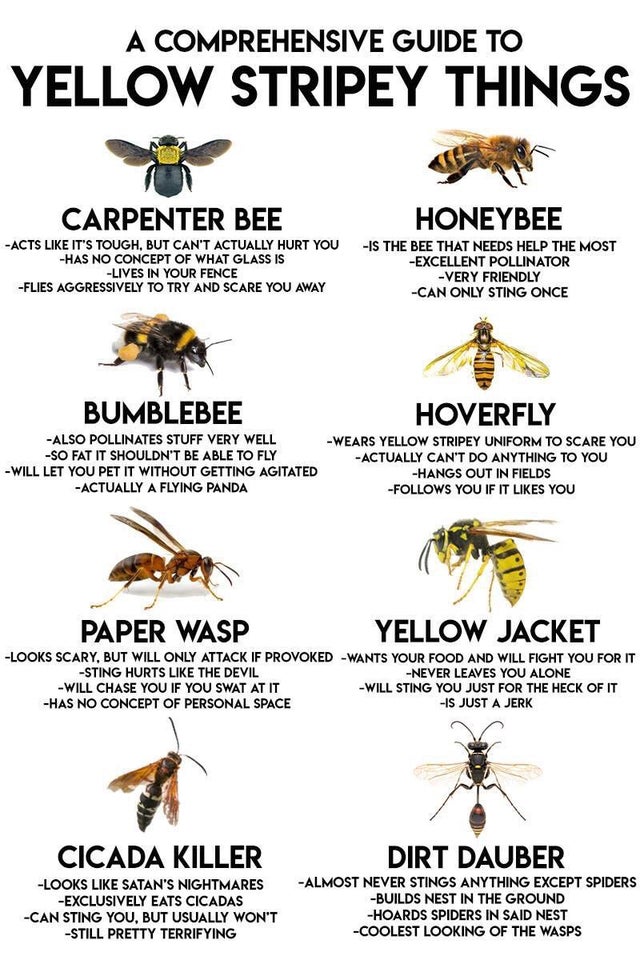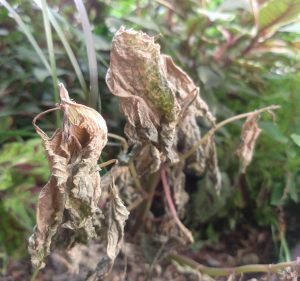Last month I mentioned that honey bees can sting — a comment which generated some very sad comments and even some honey bee hate mail. I’d like to clear up some misunderstandings about bee stings and some cases of mistaken identities.
First, you have to understand that when one of my sisters stings, it is fatal to her. Obviously, that means we would rather not sting and we honey bees are generally not aggressive. The primary reason we would sting is to protect our hive. If we feel our home is in danger, we will fight to protect it. However, when I am out foraging, collecting and pollinating, I’m far more interested in the flowers than I am in any person nearby. There is no reason we can’t work together in the garden – I will pollinate and you can harvest!
There are several other species in the insect kingdom that look like me. Wasps and Hoverflies are often confused for bees; however, they are only distantly related to me. Let me describe a few distinguishing characteristics.
Paper Wasps and Yellow Jackets also dress in black and yellow. Wasps look different from bees, though. They have smooth, sometimes shiny, bodies and a very tightly pinched waist. They are a bright yellow color and fly with their legs hanging down. These wasps work together to build a nest but they don’t raise their families as a cohesive unit. Wasps have an indiscriminate palate and will eat almost anything, including other insects, spiders, carrion, garbage, or your picnic lunch. Paper Wasps and Yellow Jackets can sting multiple times and are much more aggressive than bees. I would rather not be confused with these guys; we are not very similar.
Some other insects that wear yellow and black stripes include Carpenter Bees, Bumblebees, and Hoverflies. I’m frequently hanging around these guys as they also feed on pollen and nectar. Like me, Carpenter Bees and Bumblebees have soft, fuzzy bodies and are a muted golden-yellow. Our waistlines are not as pronounced as a wasp’s and we tuck our legs up when we’re flying. Hoverflies have smooth bodies and bright yellow stripes but they are much smaller than wasps and also lack a defined waistline. Like me, these other bees don’t really want to sting you. (Actually, Hoverflies can’t sting at all, they just wear a wasp costume to try to scare you.) These guys are also pretty good as pollinating, but maybe not as good as my sisters and me.


What to do when the bee stings:
NOTE FROM STEPHANIE: If you are stung by a bee, (and as a beekeeper, I’ve been stung many times!) here are a few pointers.
- Brush, don’t swat, the bee away. You’ll get less of the bee’s venom that way.
- Move away. If you’re near a hive or near other bees, you definitely need to put some distance between you and them.
- Brush, don’t pinch. Remove the stinger promptly by brushing it away with your fingernail or a credit card. Don’t pinch it as you’re likely to inject more venom.
- Neutralize the venom with a paste of baking soda or meat tenderizer mixed with a little water. Do this immediately; only one treatment is effective.
- Ice it to decrease swelling and control the itch.
- Take antihistamines if it becomes really itchy, red and swollen.
- Watch for signs of a more serious anaphylactic reaction. This is very rare; it happens less than 5% of the time. If you have difficulty breathing, dizziness, a swelling tongue or throat, or an all-over skin reaction, call 911 immediately. Don’t drive yourself to the hospital
.



